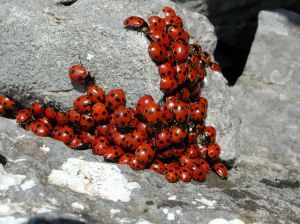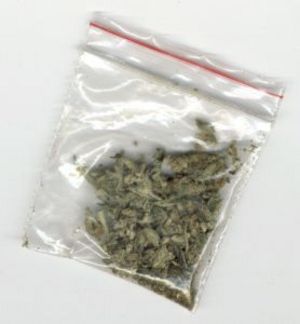Are you looking for facts about ladybugs? Are you preparing a lesson plan on ladybugs? Did your child just discover a ladybug and you’d like to make a lesson out of it? Or, are you helping your fourth grader write a report about ladybugs? Here’s some interesting facts about ladybugs.
Ladybugs have sticky feet.
Ladybugs possess sticky pads on their legs. This helps them to climb. They are able to crawl upside down on a leaf without falling off.
Ladybugs come in a variety of colors.
Most people know ladybugs for their red and black coloring. However, they come in different colors as well. Some ladybugs are orange, yellow and red. Click here to see a quick video of a ladybug that is both yellow and red.
Ladybugs have strong jaws.
After a ladybug catches a meal, it will utilize its strong jaws to eat it. Just like other insects, ladybugs have six legs and two sets of wings. They also have an antennae. The antennae helps them detect nearby insects to possibly eat.
There are more than 4000 different types of ladybugs.
Etymologists (scientists that study bugs) have discovered more than 4000 different kinds of ladybugs. They come in different colors and have different characteristics. It is possible there are some types of ladybugs in our world that haven’t been found yet.
Ladybugs eat other insects.
Ladybugs like to eat aphids. Aphids (or “plant lice”) are very small insects that eat the sap from plants. Ladybugs can consume as many as 50 aphids a day.Some ladybugs will also eat leaves. Most farmers and gardeners love ladybugs because they eat pests that harm crops.
Ladybugs do not have many natural enemies.
Unlike most other insects, ladybugs do not have many enemies. Because they have bitter-tasting blood (that they can ooze from their legs), most animals do not like to eat ladybugs. However, some spiders do not seem to care about their taste. Some will get eaten by spiders if they get caught in a web. Wasps, dragonflies and some ants will eat ladybugs as well.
Ladybugs can live for up to nine months.
Ladybugs have a longer lifespan that most insects. They usually live as adult ladybugs for three to nine months. This depends on the supply of food, weather, and if there are predators around.
Ladybugs form large groups.
Ladybugs are not always solitary. Sometimes they will stay together in groups. This can help them stay warm in the winter. Some etymologists have discovered ladybug groups with more than a million members.
Ladybugs are beetles.
Ladybugs are classified as beetles. They are closely related to the fireflies and shiny black June bugs.
Ladybugs hibernate.
During the winter, when it is very cold, ladybugs will hibernate. That means they rest until it gets warmer.
Ladybugs experience four stages of growth.
Like other insects, ladybugs will go through four stages. They are egg, larva, pupa and adult ladybug. Watch “The Stages of a Ladybug’s Life” here to see them in action.
Ladybugs can fly about 15 miles per hour.
The highest speed of most ladybugs is about 15 miles per hour. That is much slower than other insects. (Some dragonflies can fly 60 miles per hour.)
These are just a few random facts about ladybugs. Ladybugs are fascinating creatures that add to the beauty of our world.
Want more random facts? Take a look at “Facts for Kids About Centipedes” and “Facts for Kids About Mosquitoes.”. You also might read “Fun Facts for Kids About Grasshoppers.” Happy Learning!
SOURCES:
Ladybugs by Sylvia Johnson
Wild Wild World: Ladybugs by Liza Jacobs
http://www.youtube.com/watch?v=6zrDGh2DIRU
http://www.ladybuglady.com/LadybugsFAQ.htm


